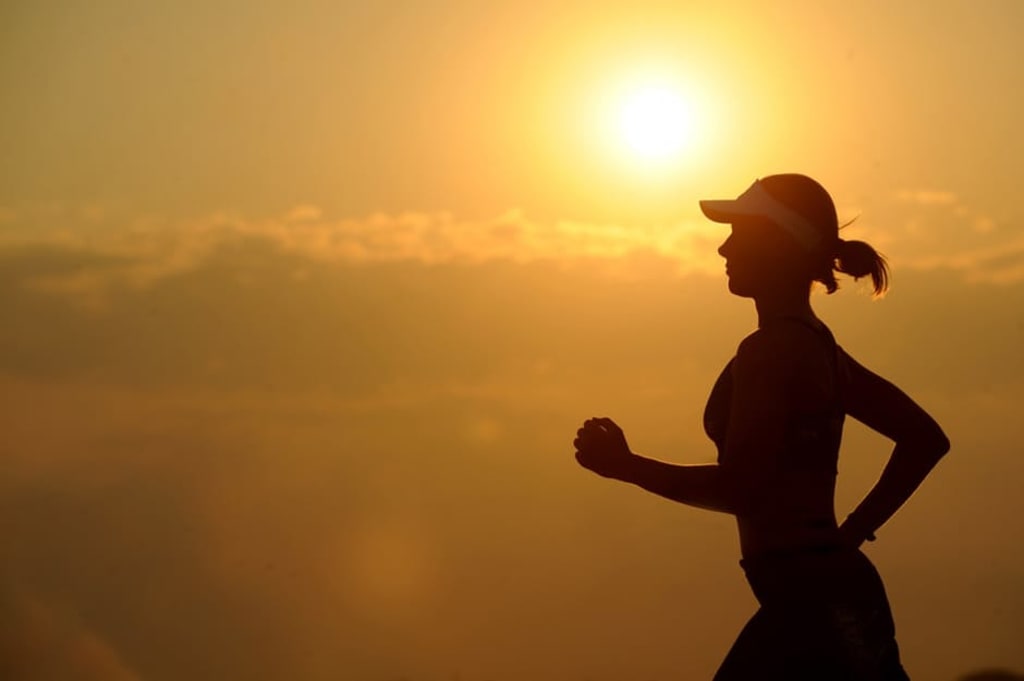8 Ways to Improve Your Fitness
Tips to promote your overall fitness and health.

Many people–especially those who take part in a sport or some other active recreational activity–believe that they get enough exercise during their ordinary daily routine to keep themselves in good physical condition. Whether or not this is true depends very much on the type of sports you're playing, and the regularity of your participation.
Some of the more popular recreational activities are listed here, together with information revealing their actual exercise value in promoting physical fitness. It should be noted that even the more active sports have widely differing effects in conditioning your body and keeping you fit.
Before You Start
The first three exercises listed - jogging, cycling and swimming - are known as aerobic exercise: that is, they increase a person’s aerobic capacity (i.e. the amount of oxygen the body can use). The continuous sustained activity demanded by these exercises causes the muscles of the legs and the upper body to contract and relax in a steady rhythm, and causes the breathing rate to increase. Therefore, aerobic exercises provide excellent exercise not only for the body's muscle strength but also for the heart, lungs and cardiovascular system. Aerobic exercise increases the efficiency of the heart's ability to pump the oxygen throughout the body, and the ability of the body's tissues to extract that oxygen. Aerobic exercises are therefore especially beneficial in building up immunity.
Do not, however, believe that you will do yourself any good by setting off on a lengthy run or bicycle ride without previous preparation. As with other forms of physical exercise, when you start any aerobic exercise you must begin with short periods of relatively undemanding exercise, as your body gradually becomes stronger. If you have not taken any regular exercise for some time, if you are over 40 years old or if you suffer from any physical disorder, you should consult you physician before starting.
1) Jogging
Jogging requires no special equipment and can be easily incorporated into anyone’s daily routine and provide great benefit to the lungs, heart and leg muscles. You should work out a program, beginning gently and gradually increasing your pace and the distance you cover.
2) Bicycling
Like jogging, bicycling consists of regular, rhythmic exercise and are similarly beneficial for the heart, the lungs, and leg muscles. Changes of the road's incline and weather conditions vary the demands of cycling on your body.
3) Swimming
Swimming develops your stamina, suppleness, and general muscular strength and promote the efficiency of the heart and lungs. Because your body is supported while in the water, your spine and joints can move freely without putting strain/weight on your back, hips, and feet. These factors make swimming especially suitable for people suffering from back pain, arthritis and rheumatism. To get the full benefit from this sport, you should practice all the strokes: butterfly stroke improves back and shoulders muscles, while backstrokes and the crawl are good for the shoulders and trunk.
4) Skiing
In terms of all-around fitness, cross-country skiing is much more valuable than downhill skiing. It promotes balance, flexibility, and general endurance.
5) Tennis and Racquetball
A lazy game of doubles is of little value in promoting physical fitness, but a fast game of singles played at a pace that demands constant and vigorous activity can be very beneficial. It strengthens the arm muscles and promotes flexibility and balance.
6) Golf
Golf is chiefly valuable as an aid to mental relaxation. The only real physical benefit comes from the walking involved in progressing around the course, and to get as much benefit as possible you should play at a brisk pace and carry your clubs on your shoulders, not in a cart or handed off to a caddy.
7) Team Sports
Games such as football and baseball demand a wide variety of skills, and generally promote all-around fitness. The issue, however, is that the amount of time during which an individual player is actively involved in the game is usually short. The pattern of sudden bursts of effort alternating with longer periods of relative inactivity puts heavy demands on the heart and lungs. The first priority in training for any team game should, therefore, be the development of general fitness.
8) Gardening and Do-It-Yourself Projects
Both of these common recreational activities are more forms of relaxation than they are of physical conditioning. Where vigorous or prolonged activity is demanded, they can have a beneficial effect on developing particular muscles. Generally speaking, though, the effort involved is not sufficient to be of any real value in promoting physical fitness, especially when labor-saving implements or electrical appliance are being used.
About the Creator
Blendea Lucia
Copywriter, Nutritional Therapist






Comments
There are no comments for this story
Be the first to respond and start the conversation.